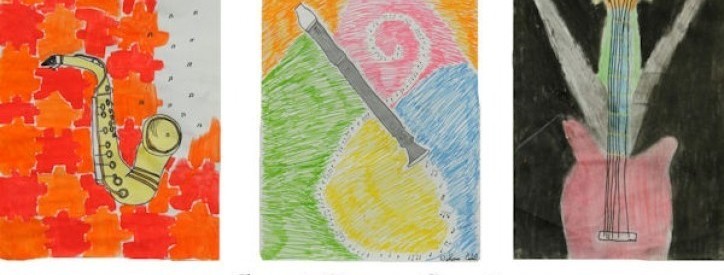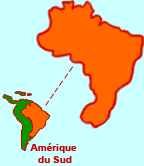Linking parts of the body and movements with mime performance , Art and dance
I love mime artists and the way they can control their
bodies and isolate parts of their bodies to exaggerate movements
This next half term we teach parts of the body to our Year 4
children .
We have great fun learning rhymes , playing response games ,
designing fantastical creatures etc. The
other day I was inspired by a poster of a famous work of art from the Tate Henri Matisse Cut Outs series. It was “Icarus “ by
Henri Matisse and this led me to think about how we could develop some movement
activities around parts of the body nouns in target language learning.I think it makes a great creative primary cross curricular
learning experience for the children
.Hope some of you may give this a go!
Henri Matisse Icarus.
Stage One
First teach the parts of the body nouns and explore the nouns in both singular and plural forms. We all love "Heads, shoulders , knees and toes " in target language teaching because it gets the children up , moving listening, responding and joining in.
Below is a link the wonderful Mama Lisa songs and the page that offers you the chance to explore this song in lots of languages!
Once the children are up and moving why not let them listen to , join in and sing along with one of the two following clips in French or Spanish ...
Here in French is "Jean petit qui danse ..."
And in Spanish here is "Juan Pequeño baila"
Using these clips help you to create active learning parts of the body and some great class performances for assemblies!
Stage Two
Inspired by Icarus I decided to put together the simple sequence of learning above with some activities which will develop understanding of instructional language to generate a physical response
You may read this and think well I can achieve part one of
this or I can combine part one and part
two or part one and part three ....That’s fine , it’s about pushing boundaries
and exploring the link between language learning and communicating a whole
creative outcome .
1. Parts of the body and physical movements
1. Practise
and teach the parts of the body – usual games and activities –listening and
responding. Make sure that the children have practised both the singular and
plural of the key parts of the body you will need for the activities below.Engage the children in the singing of one of the songs mentioned at the top of the blog or a song that is your favourite for teaching parts of the body Make sure it is a physical response song.
o
2. Introduce
and practise the key instructional language for “run”, ”jump”, ”touch”, “clap”,
“hop”, “move”, ”walk”, ”crawl” ,”slide”, “kick”,”push”,in the target languag .Link the language with an action , create mime performances of the language and the actions. Ask the children to do their actions slowly , quickly , softly etc
3.
4. Now
call a part of the body and the class should respond with an action
representing the command they think best fits with that part of the body
e.g. “hands” – children might respond by
clapping or “legs” children might respond by walking or running ....but if you
shout “leg” then maybe they will respond
with “hopping”- as it’s on one leg!
5. Play
the game a second time but this time the
children should say the command and do the actions.
6. Can
the children work in groups of four to create a flowing movement from one side
of the hall to the other which involves them saying a part of the body , then an action, then a part of the body ,
then another action using the instructional language you have practised with the class? They should use at
least five movements and five body parts to get from one side of the room to
the other!
7. You
can change the focus slightly and add
challenge by asking the children to call a number of the body parts e.g.
three legs – so the children will have to demonstrate three people hopping or
two children – one running and one hopping .
8. If
you have IPads then the children can take photos or a video of their sequences
and then back in class can add their own written statements or record themselves saying the sequence of
movements and body parts in time with the video clip or photo show .
2. Bring
Art to Life .
Creative
consolidation of language
Using the picture of Icarus explain that mythical character Icarus wanted to fly but he flew too near to the sun!
Can the children make the painting of Icarus move ?
Ask the children to observe the picture of
Icarus and make their own painting of Icarus but they need to paint the body as words , using the key body parts to create the background of the painting.
For example each body part will be made up of the noun
printed or written in the target language over and over again.
Over the top of the part of the body the
children need to add a piece of instructional language representing a movement.The background of the body will be covered with grafiti style vibrant instructional commands that are in explosive word shapes bringing the specific limb to life e.g over the hand they could paint "push" and over a leg they could paint " run" etc in the target language.
Mime
artists.
Challenging
and creative performance of new language
Give the class a picture of a sportsman or
woman in action
In pairs ask the children to create a sequence of three movements that the sports star makes when they move in their specific sport . Can they create a repetitive mime routine and add to it a repetitive target languagespoken sequence made up of parts of the body and actions that fit the sequence of movements ?
Ask the pairs to demonstrate to the class through repetitive spoken mime how the sports person moves in their chosen sequence of actions
This will be a repetitive , rhythmical spoken performance e delivered to demonstrate the physical process taking place .



















